WRC preview – your easy-to-follow pace notes for the 2017 World Rally Championship

The WRC – or World Rally Championship – takes drivers, teams and fans on a turbocharged tour of the planet's most challenging roads. The 2017 season began many months ago, the treacherous mountains of Monte Carlo having hosted the opening round at the start of the year, and we're rapidly approaching the championship's finale in Australia.
But first, the teams and crews will head to Deeside for Wales Rally GB. This is the penultimate round, and the only one held in the British Isles.

Round 1: Rallye Monte-Carlo (January 19-22)
The 2017 World Rally Championship begins with the Monte Carlo round. It was this event in 1911 that heralded the beginning of our sport, and arguably gave it its name – teams set off from all over Europe and would ‘rally’, or meet, in Monte Carlo. Much has changed since this first race, which was the brainchild of Albert I, Prince of Monaco, and which was won by a 25bhp Turcat-Méry with running boards.
This year’s Rallye Monte-Carlo is a largely asphalt event. However, because of the time of year and the unique geography of the area, competitors need to be shrewd about their driving style and their tyre choices – snow, ice, dry road and meltwater should all be expected, often within minutes of each other. Studded tyres will help them grip on ice, but will slow them down on the dry sections. And road tyres will make them fast on the tarmac, but will be hopeless on compacted snow.

In addition, the stages themselves are on dangerous mountain roads, with drivers careering through crude tunnels, dense forests and along thin strips of asphalt that cling to the spectacular sheer rock faces that define this rally. Oh, and some of the rallying takes place at night, with teams fitting extra light pods to their cars and driving at immense speed into the darkness.
Some of the 2017 Rallye Monte-Carlo is taking place on brand new stages, which should make this terrifying spectacle even more interesting. The round will start with a glamorous party in Casino Square. Then comes the chaos of night stages, hairpins, and a flying visit to the Col de Turini, a legendary mountain pass defined by hairpins and sheer drops near Sospel.
Round 2: Rally Sweden (February 9-12)
In February, the WRC circus roars into the dense forests of Sweden and parts of Norway. For its first fifteen years, it was held in the Swedish summer (and was known as the Rally to the Midnight Sun as a result) but now it’s the WRC’s only true winter stage. The service park and focal point for this rally is the small Swedish town of Torsby, a two-and-a-half hour drive east of Oslo or four hours north of Gothenburg. The stages are spread across the countryside, with two taking places entirely within Norway and one dipping into and out of the neighbouring country.
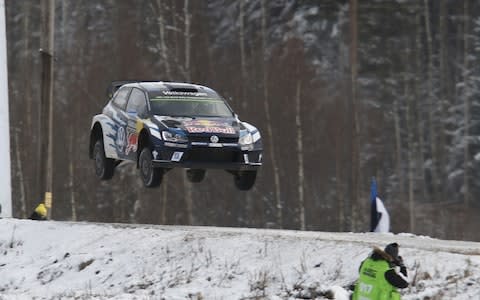
In contrast to the changeable nature of the Rallye Monte-Carlo, competitors in the 2017 Rally Sweden know roughly what they’re going to be driving on. Compacted snow forms the bulk of the round, forcing drivers into studded tyres. But in places where the snow has melted or moved, the gravel underneath has a tendency of ripping the studs out of the rubber, massively reducing grip. And just to make it more interesting, temperatures can plummet to -25 celsius – imagine trying to change a wheel in that sort of weather.
In the corners, drivers will “lean” their cars into the huge banks of snow on each side of the track. As the snow melts, these banks become softer and more crumbly until eventually, they’re so squashy the cars start getting stuck in them. If there’s been fresh snow then the leading cars will be effectively clearing the route for the teams behind them, and that’s all before you take into account the visibility – white scenery, a white road and white snow falling from the sky makes Rally Sweden a treacherous event. Drivers who grew up with these conditions generally dominate here, so expect strong times from the Scandinavians.
Round 3: Rally Guanajuato Mexico (March 9-12)
From the frozen forests of Sweden to the gravelly desert stages of Mexico, the WRC teams will fly from Europe to the Americas at the beginning of March. The rally here is mainly held on dirt roads, and is the first of six such events in the 2017 rally calendar. It’s hard to think of an environment more different to the compacted snow of Sweden – temperatures in the high twenties are normal, and put immense strain on the cars, the teams and the drivers.
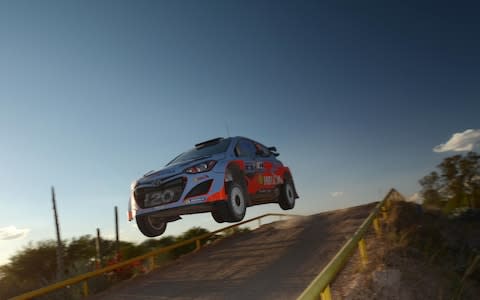
The cars’ engines, already being punished by the searing heat and dusty roads, will be tested further by an ascent to 2,737m above sea level. A total length of over 1,000km, distributed largely across the state of Guanajuato, has previously posed a problem for the many thousands of spectators that travel to see this event, but for 2017 a more spectator-friendly approach has been adopted by the organisers. Access roads have been improved, signage added and road signs installed. Visitors to British rally events may be used to trudging through the wilderness in the vague direction of car noises, but doing so under the Mexican sun can be troublesome.
Other changes to the 2017 Mexican rally include the deletion of the WRC’s longest stage, the 50-mile Guanajuato. Frenchman Sebastien Ogier’s average speed of around 60mph led him to finish this stage in 48 minutes.
Round 4: Tour de Corse – Rallye de France (April 6-9)
The World Rally Championship returns to the Mediterranean for the French round. The island of Corsica is home to this challenging dirt rally, characterised by twisty routes and sun-soaked asphalt roads. It makes a nice from the gravel and dirt of the Americas before the teams return to Argentina in April.

Corsica’s roads are as beautiful as they are challenging. The roads snake perilously around the island’s mountains, usually with a jagged rock face on one side and a life-threatening fall on the other. Stages take place all over the island, including through the picturesque villages scattered on Corsica’s hills. These “urban” parts of the WRC offer some of the best viewing opportunities for spectators, as well as some of the most difficult driving for competitors – the curious mountain settlements of this area were built before the advent of the motor car, and are narrow and unforgiving as a result.
Returning rally fans will find most of the Tour de Corse familiar, though some of the stages have been shortened. Additionally, the Rallye de France has been brought forward into spring, much earlier than the September date of 2016. How this changes the event remains to be seen, but weather is likely to be significantly different. The service park for this event is in Bastia Airport in the north east of the island, but Ajaccio hosts the starting ceremony – these two venues are around 150km from each other.
Round 5: Rally Argentina (April 27-30)
The World Rally Championship flies back across the Atlantic to Argentina for the fifth round. This event centres around Villa Carlos Paz, a lakeside resort city. The dust has only just settled in Argentina, the inaccurately-named Dakar rally having hurtled into the country in January. (The Dakar is a rally raid, which is a subset of rallying that involves multiple varieties of vehicle racing across huge tracts of land, in contrast to the strict stage-based WRC.)
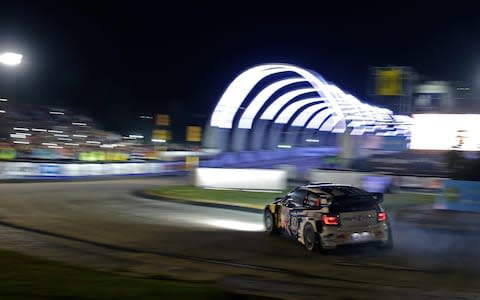
Argentina is approaching autumn in March, making this another challenging rally from a meteorological standpoint. Teams can expect generally warm weather, with local highs of around 18 degrees celsius. But rain and fog are also possible, as is the potentially catastrophic risk of ice. Dust storms are another local peculiarity, while tornadoes and hailstorms are less common but still possible.
The course consists of narrow, rock-strewn mountain tracks, with competitors flinging themselves up and down the region’s valleys. Gargantuan boulders, sheer cliffs and foolhardy spectators line the dangerous routes, which are variously dusty, sodden or frosted-over. Deep river crossings and gratuitous jumps make this a fantastic rally to watch, while the bumpy gravel surface and show-stopping obstacles make it a very challenging one to drive.
Round 6: Rally de Portugal (May 18-21)
While the Portuguese round of the World Rally Championship is far from the oldest rally, it’s one of the founding events of the “modern” WRC that began in 1973. Drivers are back onto European tracks, this time in the Algarve, which is a departure from the historic mixed surfaces that make Portugal one of the enduring rallies in the calendar.
Portugal has a bittersweet rallying past. As one of the seminal rallies of the 1970s it played host to some of the most famous cars, drivers and teams in the history of the sport. It’s also been home to the some of the most committed spectators in rallying, or indeed of any sport, many of whom would cling to rock faces or even stand in the road in an attempt to see their favourite drivers. The permissive approach to safety at rally events was taken to new extremes in Portugal in the 1980s, with virtually no crowd control and a number of fatal accidents that ultimately killed off Group B.
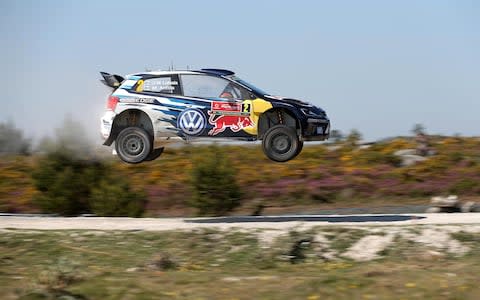
Some people argue that Rallye de Portugal has been tamed. Now in the Algarve, the courses are slightly slower, with dusty, sandy gravel roads. But it certainly seems just as dangerous in parts – last year, Hayden Padden plunged down a steep cliff in his Hyundai, which promptly caught fire and ignited a large chunk of the dry scrubland. He was followed by Estonian Ott Tanak, who made almost exactly the same mistake and plunged his Ford into the flames. In order to avoid such excitement, teams in the Rallye de Portugal will have to think very carefully about tyre choices – as well as avoiding the enormous boulders and hidden ruts that make this such a punishing round of the WRC.
Round 7: Rally d’Italia Sardegna (June 8-11)
Another member of the inaugural 1973 WRC, but with roots in the late 1920s, Italy’s round is fast, hot, and rough. The service park is in Alghero, a city on the western coast of Sardinia – the Italian rally takes place closer to the stages of the French Rally de Corse than anywhere on the mainland of its home country.

If you think that a lot of photos from this rally look the same, you’d be right. A car emerging from a dense cloud of its own dust and rocks seems to be piatto del giorno for this picturesque event, which in parts overlooks the warm waters of the Med. The jagged nature of the road surface puts immense strain on the cars, and the drivers are forced to dodge enormous granite boulders on their way down the narrow, tree-lined tracks. Take a corner too wide and you’ll either get a puncture or rip your wheel off, something that’s easy to do when it’s dusty, dark or both.
Spectators here are as intrepid as ever, with the Italian tifosi venturing into all sorts of unexpected crevasses to cheer on their favourite drivers. Prime vantage points for this special breed of rally fans include the insides of dangerous corners and as close to the round’s many jumps as possible.
Round 8: Rally Poland (June 30-July 2)
The eighth stage of the 2017 WRC takes place in Poland. It’s the second-oldest rally in the world (after Monte Carlo) having started in 1921. Like Rally Sweden, Rally Poland has had some stages in its neighbouring country – in 2014, competitors spent time in Lithuania as they hurtled through Europe’s forests.

And hurtle they will this year, too. This is one of the fastest rounds of the WRC, with flat gravel roads lined by tall grass and crops making driving (and spectating) a risky business. This year’s doesn’t cross international borders, but it comes close to the Russian border near the town of Goldap. Soft compound tyres will be in play in this landscape, which is remarkably similar to that of the next stage – Rally Finland.
Spectators, in Poland or at home, will be treated to some of the most incredible motorsport on the planet. Rally Poland has always happened at breakneck speeds, but this year’s cars will be faster than ever.
Round 9: Rally Finland (July 27-30)
Finland is to rallying as England is to cricket – it’s not exactly the national sport per se, but few people care about it as much as they do, and their level of expertise is shared by a small number of nations. The driving test in Finland is far more vigorous than it is in the UK, with several mandated theory lessons and ice driving training sessions giving the Finns an advantage over almost every other non-Nordic country when it comes to motorsport. “If you want to win, hire a Finn” is an oft-repeated phrase that definitely holds true, as this small nation punches well above its weight in WEC, F1 and WRC.
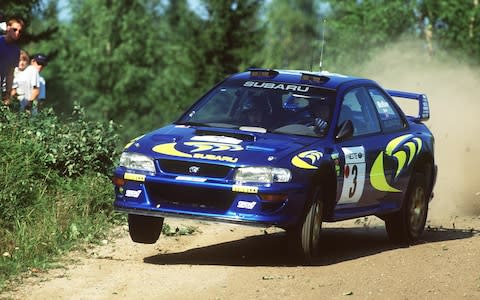
It’s this relationship with driving fast that brings so many Finns (and visitors) to the small university city of Jyväskylä every summer, where the service park for Rally Finland has been held for years. The surrounding lakes and forests form an idyllic backdrop to some of the most fierce driving of the WRC calendar.
Finland is the fastest found of the WRC. Precision is key here – every element of car control, as well as the communication between driver and co-driver, must be flawless in order to avoid calamitous crashes. Some sections have hard, grippy roads, while others are windy and loose, and jumps are everywhere. The time difference between two rivals on the same stage will either be very small or very big.
Round 10: Rallye Deutschland (August 17-20)
Competitors return to asphalt for the German round of the WRC, an impressive set of courses that include farm tracks through the region’s vineyards, open country roads and a military facility complete with anti-tank kerb stones called hinkelsteins. These obstacles, inches from the edge of the course and capable of tearing a car apart, mean that even small errors can result in spectacular crashes.
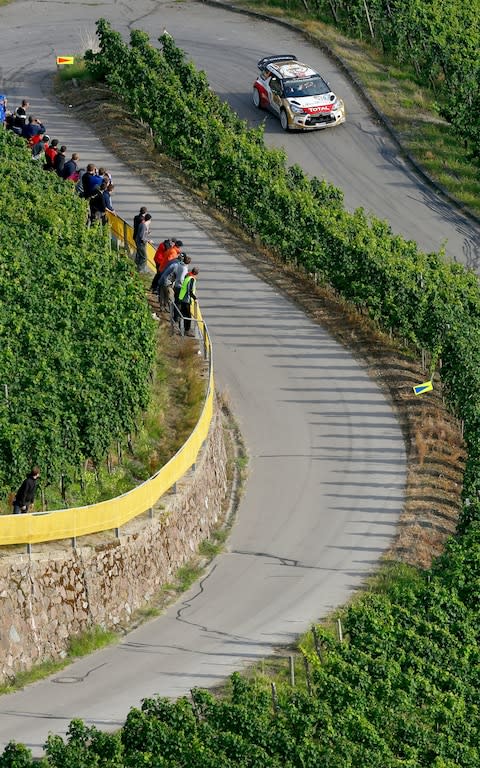
Calling this an asphalt rally is a bit of an oversimplification. As well as changeable weather making this a difficult round to predict tyre-wise, the surface does subtly change from stage to stage. Some parts of the asphalt are actually swept to increase grip (and therefore speed) while other parts are in fact low-maintenance farm tracks, made from concrete slabs or grass pavers.
Fans will congregate around the service park in Bostalsee, less than an hour’s drive south east from Trier. Because of its location, fans from all over Germany, Luxembourg, the Netherlands, the Czech Republic and further afield are within a day’s drive of the stages. It’s only around five hours’ drive from Calais, so expect to see fellow Brits among the vines if you do decide to attend.
Round 11: Rally RACC Catalunya – Costa Daurada (October 5-8)
By this point in the WRC calendar, competitors have endured asphalt and gravel rounds. But the Spanish rally combines both – drivers will encounter smooth tarmac stretches within largely gravel stages, with some stretches of road similar to a racing circuit and others more like an off-road course.

It’s October in the northern hemisphere, which means nobody knows what the weather will do. When it’s wet, the roads are treacherous, rutted, slippery and difficult to read. But even when they’re dry, the dust lingers in the air and – especially in the dark – reduces visibility to a few metres.
The service park is in Salou, on the Catalonian coast just south of Tarragona. This is a holiday destination in its own right, but during the Rally RACC Catalunya (held at the end of the tourist season) it’s packed with rally fans. Flights from the UK take a couple of hours.
Round 12: Dayinsure Wales Rally GB (October 26-29)
The British round of the WRC provides some of the most beautiful rallying in the calendar. Held in Wales, largely on forest tracks, Rally GB is likely to be very cold, very foggy, and very, very wet.
The focal point of the rally is the Deeside service park. From there, competitors travel to stages around the countryside, where fast courses are bordered on both sides by steep ditches, huge piles of logs, dense forests and thickets of vegetation. It’s impossible to know fully what surfaces to expect, with a combination of wet mud, frozen gravel, and general all-round filth making this a mucky component of the WRC calendar.

The drivers will need to be hardy, but so too will the spectators. The unpredictable British weather combined with the fundamental inaccessibility of some of the stages means that anyone hoping to get close to the action will probably walk for a mile or more through rain-soaked undergrowth before being able to open their Thermos. The opening ceremony in Llandudno is a fantastic way to begin the weekend’s rallying, though.
Round 13: Rally Australia (November 17-19)
The final round of the World Rally Championship is on the opposite side of the world to Wales. The service park at Coffs Harbour, New South Wales, is about 400km south of Brisbane and 500km north of Sydney. November is warm in this part of the world, making the contrast between Rally GB and Rally Australia even more pronounced.
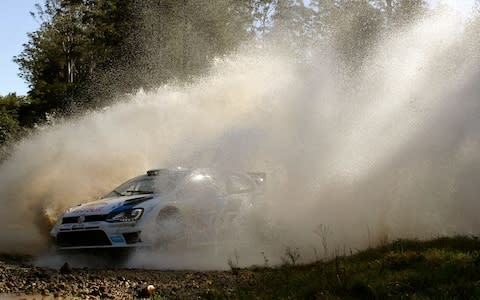
Most of the stages take place on hard, if scruffy, tracks and roads. There’s a mixture of extremely fast sections and narrow, twisty, challenging parts, especially through the dense subtropical rainforests. This final round of the WRC draws in components of every rally before it, especially Finland, Poland, Mexico and Argentina.
Australia’s car culture, as well as its appreciation for going sideways, very quickly, makes this particular rally a superb way of ending the season. At this stage, the teams, cars, drivers and co-drivers will have driven at mind-boggling speeds for thousands of kilometres in 13 countries. And they don’t get much rest either – it’s only around eight weeks before they’re expected back in their cars for the 2018 World Rally Championship in Monte Carlo.
For all the latest news, advice and reviews from Telegraph Cars, sign up to our weekly newsletter by entering your email here

 Yahoo News
Yahoo News 
